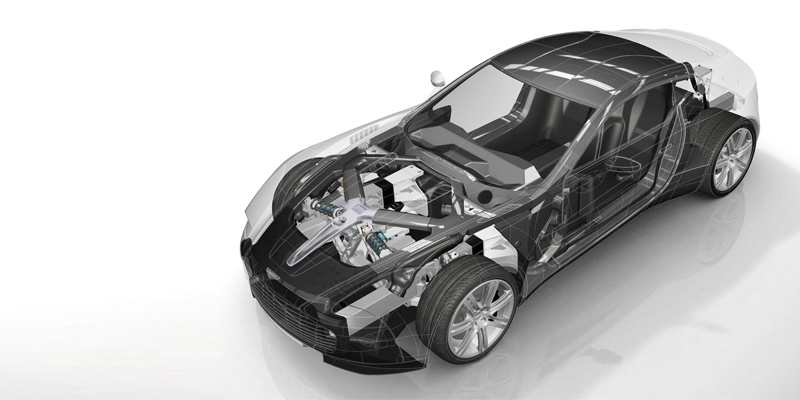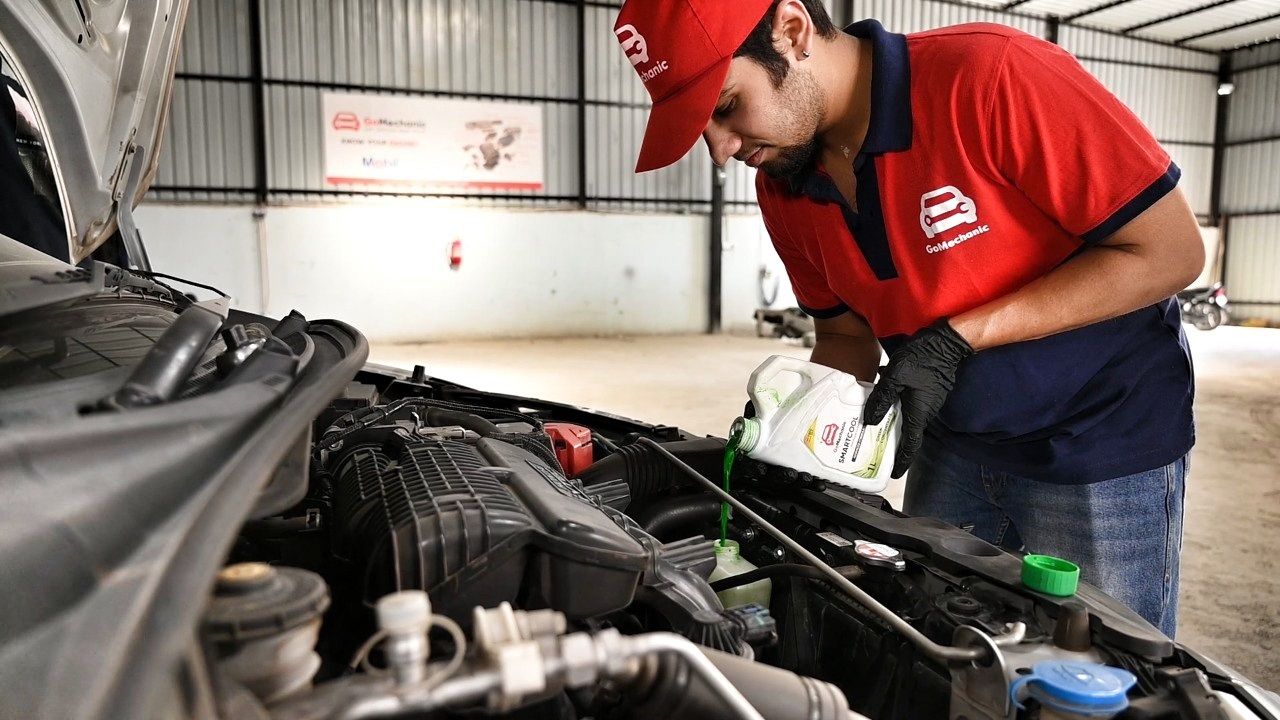Autonomous vehicle policy: Here’s why India needs to step on the gas
Tech giants and carmakers may be testing autonomous cars, but the Indian government hasn’t woken up to their benefits: safer roads, improved traffic and fuel efficiency, and more free time.
Even as countries and tech giants across the world throw their weight behind driverless cars, Minister for Road Transport and Highways Nitin Gadkari recently announced that self-driving cars do not make sense in India.
He said: “I am very clear on this. We won’t allow any technology that takes away jobs. In a country where you have unemployment, you can’t have a technology that ends up taking people’s jobs.”
But in a country where there are close to 500,000 road fatalities every year (according to the Indian road transport ministry), can one look away from the many benefits that autonomous cars offer?
Apart from enhancing safety on the roads, the potential benefits of autonomous cars include drop in commuting time, reduced mobility and infrastructure costs, greater mobility, drop in crime, higher safety, and better customer satisfaction.
According to the Earth Institute at Columbia University, autonomous vehicles will inspire “more car-sharing, reducing the number of vehicles on city streets by one-third to one-half and enabling a 75 percent drop in car ownership”.
Which country needs that more than India? But India chooses to close its eyes to the benefits of autonomous cars, for now; the world, meanwhile, is bracing for their impact.
Germany has set up an ethics committee to understand autonomous driving, AI, and the software’s ability to understand who is to be saved and not to be saved in case of car crash. In the US, too, standards are being developed and updated all the time.
“From automotive cloud suite to e-scooters, software connects people from home to work and helps them discover experiences around you,” says Rolf Bulander, Chairman of the Mobility Services at Robert Bosch GmbH. He adds that the car will be the third living experience and will have gesture and voice control: “The objective is to save lives because 90 percent of accidents are caused by human error and artificial intelligence (AI) will reduce this in automated and driverless cars.”

Plenty of opportunities
India’s lack of policy is baffling, especially when one thinks of the opportunities this presents to Indian engineers and job seekers.
There’s more. Most of the software being built for autonomous driving is being developed and tested in India. Many patents have been filed by Bosch and Continental while MBRDI, the R&D arm of Daimler, has put in a lot of effort in building a data and technology practice from Bengaluru.
The world comes to India for excellence, but we don’t have a policy on autonomous driving.
This when, according to SIAM, India sells more than three million cars per year and close to 17 million two-wheelers per year.
Why not, when the most tangible benefit is safety? Research clearly shows connected-autonomous cars don’t make human errors.
Advance Driver Assist Systems today make driving safer and more convenient with features such as blind spot object and pedestrian detection, lane assist, active city safety, active cruise control radar, collision warning with full auto brake, and active park assistance. These options are expected to become increasingly standard over the next six years.
According to McKinsey report on the connected car ADAS’s longer-term evolution is predicted to be autonomous driving – adding even more value to the driving assistance value proposition. By removing human error from the equation, fully autonomous driving promises nearly 100 percent safety and greater commuting efficiency, allowing the person in the driver’s seat to do whatever a passenger may want to do, including working, reading, watching video, or sleeping. Ultimately, autonomous driving will allow for the entire redesign of the human-machine interface (HMI) and interior layout of the car. As an example of this, Mitsubishi presented a concept car at the Tokyo Motor Show in 2013 that can transform its interior layout from “cockpit” to “office/entertainment” mode.
Jayaram Raju, Co-founder of LOBB, a real-time truck hailing platform for logistics companies, says: “An average truck driver drives 17 hours a day, six days a week. It is clear that human errors will increase accidents in India.”
Emergence of automation technologies
The US, on the other hand, is betting big on autonomous cars after heavy lobbying from General Motors, Google and Toyota.
The U.S. Department of Transportation and the National Highway Traffic Safety Administration (NHTSA) released new federal guidance for Automated Driving Systems (ADS): A Vision for Safety 2.0. This is the latest guidance for automated driving systems to industry and states. Click here to view.
According to the report, the world is facing an unprecedented emergence of automation technologies. In the transportation sector, where 9 out of 10 serious roadway crashes occur due to human behaviour, automated vehicle technologies possess the “potential to save thousands of lives, as well as reduce congestion, enhance mobility, and improve productivity”.
The US government wants to ensure it does not impede progress with unnecessary or unintended barriers to innovation. Safety remains the number one priority for the US Department of Transportation (DOT) and is the specific focus of the National Highway Traffic Safety Administration (NHTSA).
US Transportation Secretary Elaine L Chao says: “The new guidance supports further development of this important new technology, which has the potential to change the way we travel and how we deliver goods and services.”
“The safe deployment of automated vehicle technologies means we can look forward to a future with fewer traffic fatalities and increased mobility for all Americans,” Chao adds.
Tangible benefits
A Vision for Safety 2.0 calls for industry, state and local governments, safety and mobility advocates, and the public to lay the path for the deployment of automated vehicles and technologies.
“In addition to safety, ADS technology offers important social benefits by improving access to transportation, independence and quality of life for those who cannot drive because of illness, advanced age or disability,” Secretary Chao said.
A Vision for Safety 2.0 builds on the previous policy and incorporates feedback received through public comments and Congressional hearings. It paves the way for safe deployment of advanced driver assistance technologies by providing voluntary guidance that encourages best practices and prioritises safety. The document also provides technical assistance to states and best practices for policymakers.
More on the new Voluntary Guidance:
- Focuses on SAE International Levels of Automation 3-5 – Automated Driving Systems (ADSs) – Conditional, High, and Full Automation
- Clarifies the guidance process and that entities do not need to wait to test or deploy their ADSs
- Revises unnecessary design elements from the safety self-assessment
- Aligns Federal Guidance with the latest developments and industry terminology
- Clarifies Federal and State roles going forward
As automated technologies advance, so will the Department’s guidance. It is intended to be flexible and to evolve as technology does. In fact, DOT and NHTSA are already planning for 3.0.
A Vision for Safety is the newest version replacing previous guidance and offers a more flexible approach to advancing the innovation of automated vehicle safety technologies.
Change in mindset
India may not really be a force in the connected car segment yet, but there’s great potential for driverless cars.
With mobile technology penetrating deeper into the country - TRAI data reveals that India has one billion mobile phones and mobile internet is fast surpassing broadband – growth is likely in the right environment.
Apart from a change in government mindset, this will need synergy between all the involved parties – carmakers, telecom providers, map providers, and cloud service providers.
Research firm Cyber Media Research believes it will take “another generation” to make autonomous vehicle transportation network “viable for low automated regions such as India”.
Tech of the future
But do we need to step on the gas? Considering that studies show that global revenues from “connected cars” - the precursor to fully autonomous driving cars — are growing at an annual rate of 27.5 per cent and are expected to touch $21 billion by 2020.
It is time India made some strides in this technology; time the Indian government stopped having such a myopic approach to this technology of the future. Why should safeguarding some jobs be placed ahead of the umpteen benefits autonomous vehicles offer?
Children today drop out of school to drive ride-hailing cabs and earn Rs 15,000 ($200) per month. But, that’s not enough. Autonomous driving can put all these kids back into school and create an alternative career path. There’s no dearth of work to be done to put India on the path to progress. Won’t autonomous cars show the way with greater rewards than risks?











